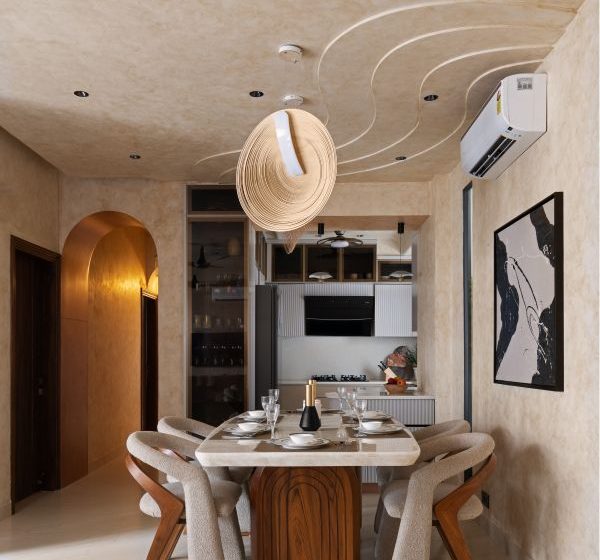Designing for Emotion: How Interiors Influence Mood and Daily Living?

Team L&M
Have you ever entered a room and been struck by how instantly your mood changed? An interior designer employs design concepts to influence our brains to act in a particular manner, whether it is through the colour of the wall or the arrangement of the furniture in the space. Designing with the idea of humanity and emotions results in spaces that influence the mood and daily living. In this article, Chhaya Sharma, Founder of Design ArTEC, examines the design psychology that interior designers employ to influence our daily life, whether it is our mood or our level of productivity.
Interior Design Psychology
To ascertain how colour, material, and arrangement will affect an environment’s mood or ambiance, interior designers employ psychology. Large windows and vibrant paint may provide an air of openness and friendliness. On the other hand, a room that has a dark colour and little light might seem opulent and secluded. A well-designed environment may improve mood, boost productivity, reduce stress, and even inspire creative thinking.
Lighting for Shaping Mood
Lighting dramatically affects mood and circadian rhythms. Poor lighting can lead to feelings of fatigue and even depression, while optimal lighting can energise and uplift. Natural light is essential for well-being. Spaces that allow daylight to flood interiors not only reduce dependence on artificial lighting but also enhance mood and alertness. Layered lighting creates flexibility and control over the atmosphere. Warm-toned ambient lighting fosters cosiness, while focused task lighting supports functionality.
World Interiors Day (IFI WID) is celebrated annually on the last Saturday of May
Texture and Materiality: Engaging the Senses
Emotionally resonant interiors often speak through touch. Textures and materials add visual depth and invite physical interaction, grounding occupants in sensory experience. Soft textures like plush fabrics, velvets, and knits evoke comfort and warmth, ideal for relaxation spaces. Smooth, cool materials like glass, metal, and polished stone convey sleekness and modernity. Natural materials instil a sense of authenticity and connection to nature, key principles in wellness-oriented design.
Spatial Flow and Layout
Spatial planning profoundly influences emotional experience. Open floor plans encourage freedom and social interaction, while enclosed nooks promote solitude and reflection. Clear circulation paths reduce mental fatigue and frustration. A logical, intuitive layout contributes to a feeling of control and ease. Zoning and transitions help define emotional experiences. Proportions and scale affect our emotional responses, too. High ceilings may inspire awe and expansiveness, while lower ceilings create intimacy and security.
Designing for emotion is about empathy. It requires listening to clients, to context and crafting spaces that care. As we shift from spaces of mere function to environments of emotional intelligence, interior design becomes a deeply human-centered practice!

